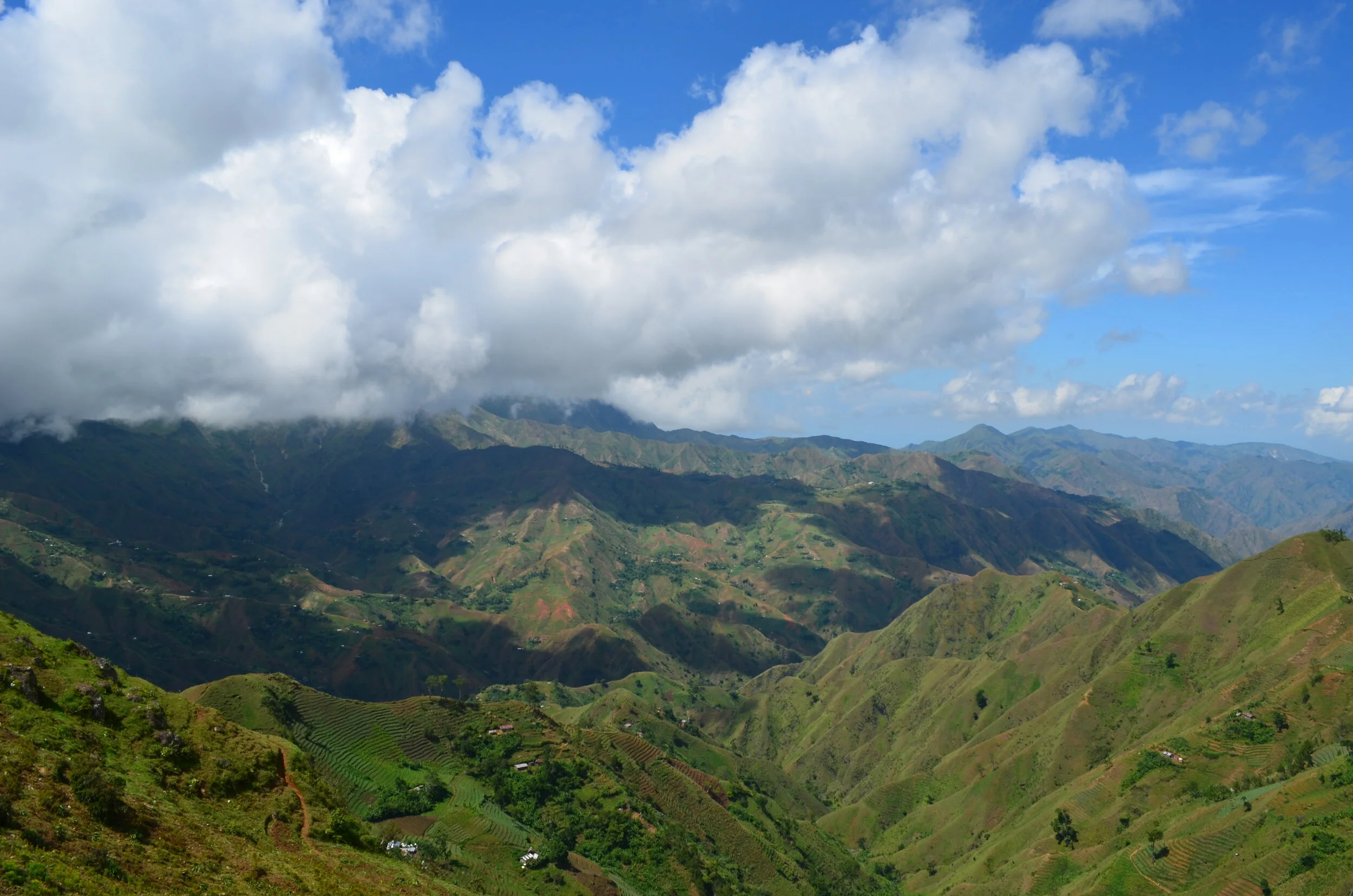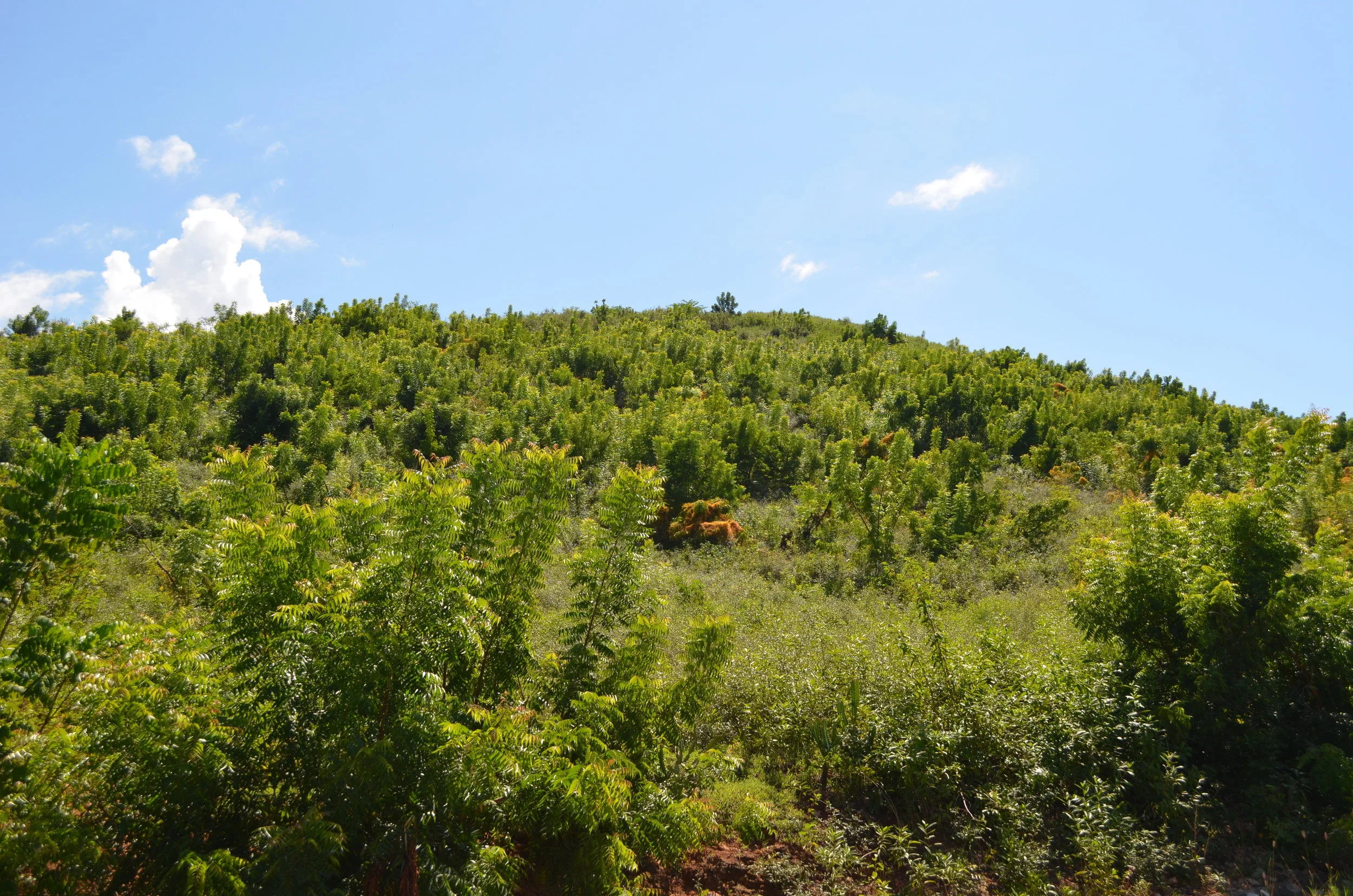Curtis’s Botanical Magazine is an illustrated publication that began in 1787 and is still published today. The Magazine is published by Kew Gardens and is the oldest and most widely cited work of its kind. Plumeria first appeared in the Magazine in 1794 by William Curtis and three more taxa appeared in the 19th century. The first Caribbean endemic species of Plumeria to be featured in the Magazine is Plumeria filifolia, a thin-leaved species from Cuba.
Read MoreYesterday was International Mountain Day, as observed by the United Nations. I love this year’s theme: Mountains Matter for Youth. Our youth are the future leaders of tomorrow. Education, not only on the importance of mountains, but on all natural ecosystems and the biodiversity that they contain has been a large part of my daily inspiration. When I first saw that mountains were being celebrated, I thought of all of the mountainsides where I have looked for wild growing Plumeria, particularly in Haiti.
Read MoreBrittany Harris is a fellow Ph.D. candidate at Florida International University in the Biology department and a good friend of mine. There has been a lot of concern lately with all of the fires making headlines. Since Brittany studies and works in a fire-dependent ecosystem, who better to sit down with and chat about them? She studies the effects of disturbances on pollination systems in islands. Disturbances—including natural (fire and hurricanes) and human-caused ones (mosquito spray). Moral of the story: We need to re-shape Smokey, starting fires is not good, but not all fires are bad. In order to maintain biodiversity and to prevent bigger fires later, we have to let some fires happen, we can’t control nature.
Read MoreI met Haydee Borrero when I came to visit Miami in 2014. She asked me if I had ever been to the Everglades and when I said no she said “I’ll pick you up tomorrow at 5am”. It was a magical morning. I am happy to call her my friend to this day. This past year we traveled to Cuba together twice since our field sites overlapped. Haydee has had an interesting path is now doing some really cool work as part of her PhD.
Read MoreI am happy to announce that a paper that I have been working on for many years has finally been published in Brittonia this past week! The paper focuses on ten species in the genus Miconia (Melastomataceae), the largest genus in the family. These ten species all occur in the northern Andes in Colombia and Venezuela and the Sierra Nevada de Santa Marta and Coastal Cordillera of Venezuela, with one species endemic to Jamaica. This study illustrates the importance of field and herbarium collections. Herbaria document the world’s flora and provide a permanent record of botanical diversity. This is particularly important for endangered and threatened species such as those in the Miconia ulmarioides complex.
Read MoreFor the last two weeks, we have had a very special visitor at FIU and FTBG, Tracy Commock, Director of the Natural History Museum of Jamaica. I met Tracy, a fellow botanist, in 2014 and she has since become a great colleague and friend. Tracy has been paramount in developing a collaboration between UWI and FIU through an inter-institutional official agreement already in place between these two universities. I took her out for ice cream and we chatted about life as a botanist in Jamaica.
Read MoreI recently went to a talk given by Drs Doug and Pam Soltis, who are botanists at the University of Florida. They discussed their work on molecular systematics and evolutionary genetics. Their talk was so inspiring that I’d like to talk about how we use DNA molecules and how it all fits into the bigger puzzle of life. The Soltis’s focused specifically on the portion of their work involving the Tree of Life.
Read MoreMost people know that botany is the study of plants, but what does it actually mean to be a botanist? For me, studying plants means inspecting the subtle and sometimes grandiose differences between species. Documenting life on Earth as it is increasingly threatened is imperative in my opinion. If we don’t know what exists in an area, how can we properly implement conservation strategies to preserve Earth’s beautiful biodiversity?
Read MoreI’ve become more aware of my plastic consumption after a recent trash pickup hosted by Debris Free Oceans and decided that this year’s New Year Resolution will be to be more actively conscious of the plastic that I consume. Though I’m spending the holidays in the snow in New York on the Canadian border where I grew up, living in Miami for the last few years, marine debris hits me particularly close to home.
Read MoreAs a tropical botanist, my research and training has taken me all over the tropics. During a recent fieldwork trip to Haiti I was reminded that even seasoned researchers can be awed by the sheer scope of biodiversity that exists within our tropical rainforests, or in this case lack thereof. Upon first glance, the roadside slopes of Haiti look awfully green, but look again and you’ll notice that it’s all one shade of green: Neem.
Read More








